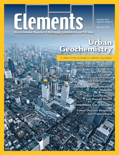
Elements
Scope & Guideline
Shaping the Future of Geological Knowledge
Introduction
Aims and Scopes
- Geochemistry and Mineralogy Research:
The journal emphasizes the study of geochemical processes and mineralogical phenomena, exploring the interactions between geological materials and their environments. - Planetary and Extraterrestrial Studies:
'Elements' explores not only terrestrial systems but also planetary geology, including the study of exoplanets, asteroids, and other celestial bodies, contributing to our understanding of the universe. - Innovative Methodologies:
The journal showcases advanced analytical techniques and experimental approaches, including molecular dynamics simulations and high-pressure experiments, that enhance our understanding of geological processes. - Environmental and Sustainable Geoscience:
The journal addresses issues related to environmental impact, sustainable resource management, and the role of geosciences in addressing global challenges, such as climate change. - Historical and Contemporary Geoscience:
'Elements' encompasses both the historical contexts of geological developments and contemporary research, thus providing a comprehensive view of the evolution of earth sciences.
Trending and Emerging
- Hydrogen and Deep Earth Studies:
Research on hydrogen's role in deep Earth processes, including its implications for plate tectonics and seismicity, is gaining momentum, highlighting an increasing interest in the geochemical cycles of this element. - Geometallurgy and Resource Management:
Emerging themes in geometallurgy reflect a growing focus on sustainable mining practices and resource management, addressing the need for environmentally conscious approaches in the extraction of minerals. - Extraterrestrial Geochemistry:
The exploration of organic matter in space, including studies on asteroids and the origins of life, is trending as scientists seek to understand the connections between planetary systems and Earth. - Climate Change and Geological Impacts:
Research linking geological processes to climate change, including the effects of large igneous provinces and other geological phenomena on biogeochemical cycles, indicates a rising trend in addressing global environmental challenges. - Advanced Analytical Techniques:
The use of innovative analytical methods, such as high-resolution isotopic analyses and molecular dynamics simulations, is increasingly prevalent, driving forward the frontiers of geochemical research.
Declining or Waning
- Traditional Mineralogy:
There has been a noticeable decrease in the focus on classical mineralogy topics, as the field has increasingly integrated with more interdisciplinary approaches that combine geochemistry and environmental science. - Historical Geology:
Papers strictly centered on historical geological events and processes have decreased, possibly due to a growing emphasis on contemporary applications and environmental issues. - Geochemistry of Fossils:
Research specifically targeting the geochemistry of fossils and paleobiological aspects appears to be less frequent, as the journal shifts towards broader themes that encompass living systems and current environmental concerns. - Conventional Petrology:
Topics focusing solely on conventional petrology have diminished, as the journal embraces a more integrated approach that combines petrology with geodynamics and geochemical processes. - Geoscience Outreach and Education:
While still relevant, the emphasis on outreach and educational aspects of geoscience is waning, indicating a possible shift towards more research-driven content in the journal.
Similar Journals
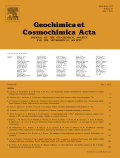
GEOCHIMICA ET COSMOCHIMICA ACTA
Pioneering Research at the Intersection of Earth and CosmosGEOCHIMICA ET COSMOCHIMICA ACTA is a premier journal dedicated to advancing the fields of geochemistry and petrology, published by Pergamon-Elsevier Science Ltd. With its ISSN 0016-7037 and E-ISSN 1872-9533, this esteemed journal has been at the forefront of scientific inquiry since its inception in 1950, with a strong commitment to disseminating high-quality research through 2024. Its reputation is underscored by an impressive impact factor and a ranking of #8 out of 154 in Earth and Planetary Sciences according to Scopus, placing it in the 95th percentile of its category. GEOCHIMICA ET COSMOCHIMICA ACTA serves as a critical resource for researchers, professionals, and students alike, offering insights into the complex interactions of geological and cosmological processes. While the journal is not open access, it remains a vital conduit for innovative research, fostering the scientific community’s understanding of earth materials and their significance.

Geosfernye Issledovaniya-Geosphere Research
Exploring the Depths of Earth and BeyondGeosfernye Issledovaniya-Geosphere Research, published by TOMSK STATE UNIVERSITY, is a significant addition to the scholarly discourse within the fields of Earth and Planetary Sciences, Ecology, and Geography. With a focus on innovative research and insights that span a broad spectrum of environmental and geographical studies, this journal aims to provide a platform for researchers and students alike to disseminate their findings and discuss pressing issues facing our planet. Though classified in the Q4 quartile for its 2023 metrics, it serves as an important venue for early-career scientists and scholars from the Russian Federation and beyond to contribute to the global dialogue surrounding geosciences. The journal operates with various access options, making it accessible to a diverse audience. It encourages submissions that inspire robust discussion and exploration of topics vital to our understanding of the geosphere and its intricate dynamics. Covering the pivotal years from 2019 to 2024, Geosfernye Issledovaniya-Geosphere Research is poised to enhance its relevancy and impact within the academic community.
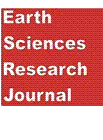
Earth Sciences Research Journal
Advancing Knowledge for a Sustainable PlanetThe Earth Sciences Research Journal, published by the UNIV NACIONAL DE COLOMBIA, serves as a pivotal platform for the dissemination of knowledge in the diverse field of Earth and Planetary Sciences since its inception. With an ISSN of 1794-6190 and an E-ISSN of 2339-3459, this Open Access journal has been committed to providing unrestricted access to high-quality research since 2004. Located in Bogotá, Colombia, it has gained recognition within the academic community, achieving a Q3 quartile ranking in Earth and Planetary Sciences and notable Scopus rankings, which further underscores its relevance and reach. Its scope encompasses varied research topics, making it an essential resource for researchers, professionals, and students alike, seeking to contribute to or stay informed on the latest developments in the Earth sciences up to the year 2024. The journal not only anticipates cutting-edge research but also emphasizes collaborative dialogues among global experts, driving forward the conversation on critical issues facing our planet.

Journal of Asian Earth Sciences-X
Connecting Researchers to Tackle Global Environmental ChallengesJournal of Asian Earth Sciences-X, a distinguished publication by ELSEVIER, is at the forefront of Earth and planetary sciences, particularly focusing on the dynamic fields of geology and earth-surface processes. As an Open Access journal since 2019, it provides unparalleled access to high-quality research, fostering global collaboration and dissemination of knowledge. With an impressive impact factor and ranking in the Q2 category for both Earth-Surface Processes and Geology, it serves as a crucial platform for researchers, professionals, and students alike to share their findings and insights. Situated in the United Kingdom, the journal thrives on contributions that enhance our understanding of Asian geosciences within a broader global context, aiming to tackle major challenges such as climate change and natural resource management. By bridging regional studies with global perspectives, the Journal of Asian Earth Sciences-X is not only a vital resource for academia but also supports sustainable development initiatives across the region.
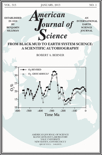
AMERICAN JOURNAL OF SCIENCE
Uncovering the Secrets of Our PlanetThe American Journal of Science, published by the esteemed Amer Journal Science, stands as a leading platform for groundbreaking research in the field of Earth and Planetary Sciences. With an impressive impact factor and distinguished Scopus rank 34/195 in its category, the journal occupies a prestigious position in the academic community, reflecting its high-quality and influential contributions to scientific knowledge. The journal’s objective is to disseminate original research, comprehensive reviews, and critical discussions that advance our understanding of geological processes and planetary phenomena, supporting scholars and practitioners in their pursuit of knowledge. Despite its traditional publication structure, viewers can explore its rich repository of works dating from 1945 to present, offering a wealth of insights into the dynamic Earth sciences. The journal remains a vital resource for researchers, professionals, and students eager to engage with the latest scientific findings and foster further innovation in the field.

Moscow University Geology Bulletin
Illuminating the Path of Geological DiscoveryMoscow University Geology Bulletin, published by SPRINGER INT PUBL AG, is a prominent platform for disseminating critical research in the field of Earth and Planetary Sciences. With an ISSN of 0145-8752 and an E-ISSN of 1934-8436, this journal is well-regarded for its contributions to diverse geological studies and interdisciplinary advancements that shape our understanding of the planet. The journal has established itself in the academic community, particularly noted for its ranking in the Q3 category within Earth and Planetary Sciences as of 2023. Despite its limited open-access options, the Moscow University Geology Bulletin remains an essential resource for researchers, professionals, and students through its well-curated articles and synthesis of geoscientific knowledge. With annual volumes converging from various years, including significant years like 2012 to 2024, it aims to uphold its mission of fostering scholarly dialogue and innovation in the geosciences.

Journal of Geosciences
Fostering Interdisciplinary Dialogue in GeosciencesJournal of Geosciences is a distinguished peer-reviewed journal published by CESKA GEOLOGICKA SPOLECNOST, based in the Czech Republic, that serves as a vital platform for the dissemination of innovative research in the field of Earth and Planetary Sciences. With an ISSN of 1802-6222 and E-ISSN of 1803-1943, this journal has established its significance within the academic community, evidenced by its Q3 ranking in both Earth and Planetary Sciences and Geology. The journal covers a broad array of topics, making it an essential resource for researchers, professionals, and students interested in geoscientific advancements and discoveries. The Journal of Geosciences reflects a commitment to high-quality scholarship, embracing a variety of methodologies and interdisciplinary approaches, and provides open access to its content, thereby encouraging global collaboration and knowledge sharing among geoscientists. With a publication history converging from 2007 to 2024, it continues to be a prominent venue for critical conversations and developments in the ever-evolving field of geosciences.

Geochemical Perspectives Letters
Fostering dialogue in the dynamic world of geochemistry.Geochemical Perspectives Letters, published by the European Association of Geochemistry, is a leading open-access journal that has been at the forefront of geochemical research since its inception in 2015. Based in France, this journal is dedicated to disseminating high-quality, original research and reviews across the fields of Environmental Chemistry, Geochemistry, and Petrology, and Geology. With an impressive Q1 ranking in multiple categories, and notable Scopus rankings placing it among the top-tier journals in Earth Sciences, Geochemical Perspectives Letters aims to foster scientific dialogue and collaboration among researchers and professionals. Its open-access model ensures widespread dissemination of knowledge, making it accessible to a diverse audience, including students and seasoned experts alike. As the journal continues to converge research insights from 2015 to 2024, it remains a pivotal resource for those striving to understand and address the complexities of our planet's geochemical processes.

Earth and Space Science
Championing Open Access for Earth and Space Innovations.Earth and Space Science, published by the American Geophysical Union, is a distinguished open-access journal that has profoundly impacted the realms of earth and planetary sciences as well as environmental science since its inception in 2014. With impressive rankings, including Q1 in both Earth and Planetary Sciences and Environmental Science for 2023, this journal ranks 38th out of 195 in the general Earth and planetary sciences category and 51st out of 219 in environmental science, showcasing its commitment to high-quality research dissemination. The journal serves as a vital platform for researchers, professionals, and students, fostering the exploration of critical topics and advancements within these pivotal fields. With an accessible format, researchers can benefit from the rich content available, furthering their knowledge and ensuring that groundbreaking discoveries reach a broader audience. The journal's ongoing commitment to open access aligns with contemporary trends in scholarly communication, emphasizing inclusion and collaboration in tackling pressing global challenges.
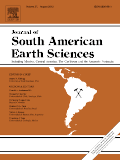
JOURNAL OF SOUTH AMERICAN EARTH SCIENCES
Connecting Past and Present in Earth SciencesJOURNAL OF SOUTH AMERICAN EARTH SCIENCES is a premier interdisciplinary journal dedicated to publishing high-quality research in the fields of Earth-Surface Processes, Geology, and Paleontology, making it an essential resource for scientists and researchers focused on South American geology and its diverse geological phenomena. Published by Pergamon-Elsevier Science Ltd in the United Kingdom, this journal has been instrumental in disseminating groundbreaking studies since 1988, showcasing contributions that push the boundaries of knowledge in Earth and Planetary Sciences. With an impressive Scopus ranking—positioning it in the 74th percentile for Paleontology and 71st for Geology—this journal not only reflects robust academic quality but also its commitment to addressing critical geological challenges in South America. Researchers will appreciate its objective of advancing understanding of geological processes while providing insights into past, present, and future Earth environments. Although available through traditional subscription models, the journal's vast repository of articles enriches the academic landscape, facilitating the sharing of vital research among professionals, students, and geological practitioners.